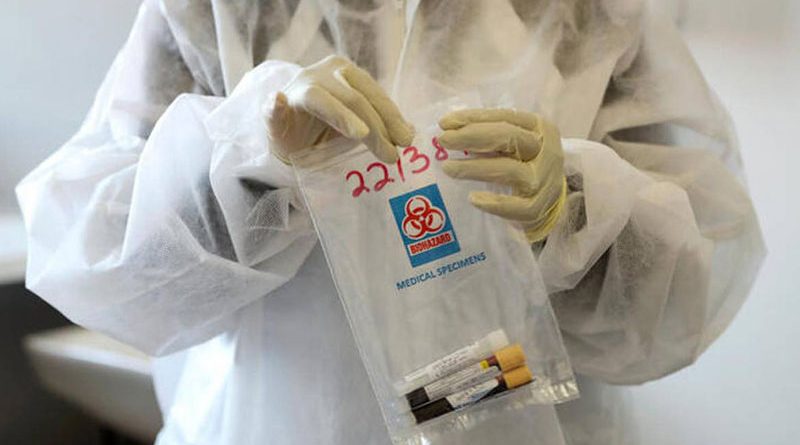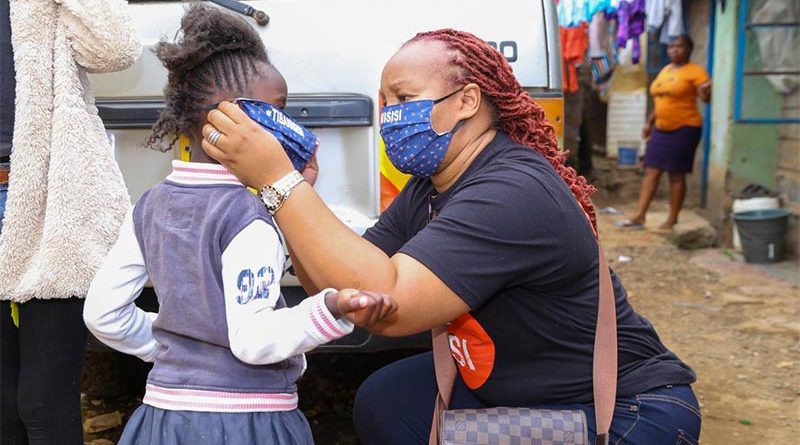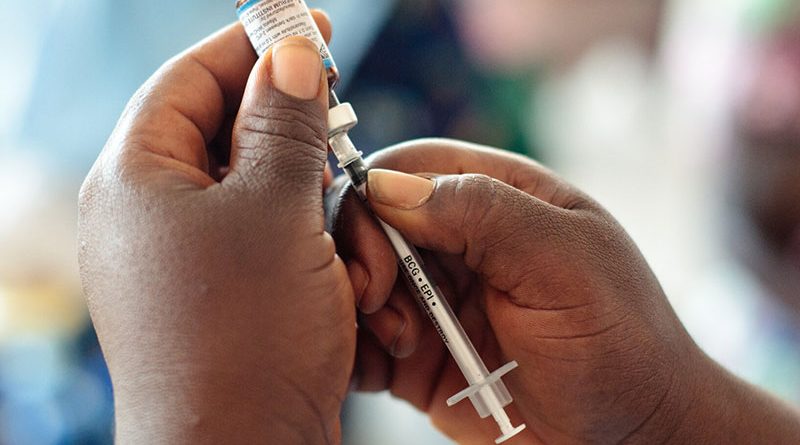ETHNIC minority groups are disproportionately affected by the novel coronavirus, with Blacks and Asians at increased risk of COVID-19 infection compared to white individuals, according to an analysis published in The Lancet medical journal
About 18.7 million patients from 50 studies were included to establish the findings, the analysis said. Forty-two of the studies were from the United States and eight from the United Kingdom.
“Asians may be at higher risk of ITU (intensive therapy unit) admission and death,” the analysis read.
“These findings are of critical public health importance in informing interventions to reduce morbidity and mortality amongst ethnic minority groups,” it added.
Ethnic minority groups were more likely to be employed as essential workers, and hence less able to work from home, the study said. Therefore, they continued to have contact with others through work or commuting, thereby being left more exposed to infection.
They are also more likely to have lower socioeconomic status, which may increase the likelihood of living in overcrowded households or accommodation with shared facilities, the findings suggested.
Black people are twice as likely to become infected with COVID-19 as white people, and people from Asian backgrounds are one and a half times as likely, researchers found.
The study was conducted as a review and a meta-analysis to explore the relationship between ethnicity and clinical outcomes in COVID-19.
About half of the papers used in the analysis have appeared in peer-reviewed journals and the rest were preliminary findings.
Source – Thomson Reuters Foundation.
HOPE is rising that a new vaccine could halt the COVID-19 pandemic – for some – but lessons learnt from past vaccine programmes in West Africa suggest millions more might miss out.
The super-cold storage temperature required for the new vaccine will make it near impossible to deliver in rural parts of Africa, said public health expert Evelyn Castle.
“We would need all new infrastructure,” said Castle, executive director of the Nigeria-based non-profit organisation eHealth Africa, which in 2016 helped distribute an Ebola vaccine in Sierra Leone at similar temperatures.
“(In Sierra Leone), we had to do full renovations of some of the facilities we worked in.”
The pharmaceutical company Pfizer and its partner BioNTech SE said on Monday that initial trials showed their experimental COVID-19 vaccine was more than 90% effective.
But the vaccine must be kept at temperatures of minus 70 degrees Celsius (-94 F) or below – colder than the North Pole. Even sophisticated U.S. hospitals say they lack that capability.
Routine vaccines typically need to be stored at 2-8°C, about the temperature of a normal refrigerator, and even this is a challenge for much of West Africa, where electricity is non-existent or unreliable, said Castle.
The Ebola vaccine trial in Sierra Leone involved immunising about 8,000 health workers – quite a task, but nothing compared to the job of protecting millions against COVID-19, said Castle.
Coronavirus has killed almost 1.3 million people worldwide and infected 50 million. European nations have already started making deals with Pfizer to purchase millions of doses of the vaccine.
Other companies including Moderna Inc , Johnson & Johnson and Novavax Inc are working on developing vaccines that would not need such low temperatures.
But the first out the block, if it wins emergency U.S. approval as hoped this month, would be Pfizer’s, ensuring a global scramble for infrastructure to make it work.
COLD COMFORT
In Nigeria, many rural health centres have solar-powered fridges, but Castle said they lack the power to hit -70°C.
Generators would be needed, along with someone to ensure they were serviced, fuelled, and monitored constantly so they didn’t drop below the temperature threshold, she said.
Transportation would also be challenging, and not just because of temperature constraints.
“Obviously there are a lot of challenges with keeping it cold in transport, but you might not even have cars, you might not have fuel, you might not have drivers to do the actual delivery,” she said.
In Sierra Leone, health centres had to be equipped with running water so the Ebola vaccine could be administered safely, and with the internet to keep track of patient records.
Given all this, a likely scenario is that any vaccine would go to urban areas first, Castle said – in itself a potential problem.
“If we have a limited number of vaccines, who are we going to target? Are we really just going to be giving this to the rich people living in cities?”
Source – Thomson Reuters Foundation.
HALF a million reusable masks, 123 tonnes of soap and 1,750 hand-washing stations. These numbers are music to the ears of business consultant James Irungu Mwangi – telling the story of the efforts he led to protect Kenyan slum-dwellers from COVID-19.
They also show how socially-minded businesses can thrive in times of crisis, said Mwangi, who for years has urged African firms to look beyond profit and tackle issues like poverty and climate change by working with governments and non-profits.
The coronavirus pandemic has driven many firms to do just that, he said, describing the health crisis as an opportunity for companies to reassess their priorities.
“Businesses used to write a cheque to make a problem go away,” said Mwangi, executive director of the Dalberg Group and a Partner with Dalberg Advisors.
“Now they realise if they don’t respond – help people fight the disease, preserve the planet – they won’t exist next quarter,” said Mwangi, a speaker at the Thomson Reuters Foundation’s annual event, Trust Conference, being held online on Wednesday.
(Reporting by Tom Finn; Editing by Helen Popper. Please credit the Thomson Reuters Foundation, the charitable arm of Thomson Reuters, that covers the lives of people around the world who struggle to live freely or fairly)
COVID-19 has already forced businesses to abandon harmful practices long considered essential, like frequent air travel, triggering discussions about the role companies should play in building better societies and more inclusive economies.
When the outbreak hit Africa in March, many feared the disease would tear through the continent’s packed slums and overwhelm fragile health systems.
Mwangi marshalled Kenyan companies, NGOs, community groups and government bodies – players that rarely worked together but now had a common goal – in confronting the pandemic.
Out of the collaboration came Safe Hands Kenya, a campaign to supply vulnerable Kenyans, many living in Nairobi’s slums, with soap, masks and hand-washing stations manufactured locally to protect jobs.
“We launched in crisis mode,” he said. “Digital retailers, soap manufactures, media companies, and grassroots groups from informal settlements all piled in and asked ‘what can we do?'”
Mwangi convinced rival companies to share the locations of thousands of road-side stores in Nairobi where free hand-washing stations were installed.
The Safe Hands team mapped out kiosks across the city to identify neighbourhoods cut off from sanitation.
“It was a brutal death march of very late nights and some (of the companies) fought like cats and dogs. But it was this huge systemic shock of the pandemic that ultimately shifted mindsets,” he said.
‘VIRTUOUS CIRCLE’
Safe Hands Kenya has provided more than 1.5 million Kenyans with access to hand-washing facilities and reached a further 3 million through a social media campaign – Tiba Ni Sisi or “We Are The Cure”, which encouraged social distancing.
Fewer people have died of COVID-19 in Africa than initially feared, and the continent has registered roughly 35,000 deaths and 1.4 million confirmed cases, according to Reuters data.
Experts say some COVID-19 deaths are probably going unregistered, but that expertise in epidemic control from tackling other outbreaks as well as outdoor living and lower rates of travel could be helping Africa fare better.
Businesses are also playing their part in tackling the pandemic and its fallout.
Mobile apps that transmit agricultural prices and weather forecasts to farmers are being used to send out messages on how to avoid contagion by COVID-19.
In South Africa, the government is working with the private sector to manufacture 10,000 ventilators, while garment factories in Kenya and Ghana have switched to making masks and protective clothing.
Still, plummeting revenues signal tough times ahead for African social enterprises, Mwangi warned.
“There is a funding drought coming in 2021 and its going to be Darwinian. Social businesses can’t just say ‘I’m saving one village’. They must have a way to scale-up, to set off a virtuous cycle,” he said.
But the days of maximising profit at any cost appear numbered, he said:
“The big, bad consequences of the future are no longer decades away. They’re not our children’s problems, they have become ours.”
Source – Thomson Reuters Foundation.
PFIZER Inc has said its experimental COVID-19 vaccine was more than 90% effective, a major victory in the fight against a pandemic that has killed more than a million people and infected 50 million.
Drugmakers around the globe have been racing to develop vaccines against COVID-19, but organisations such as the vaccine alliance GAVI have expressed fears that poor nations would lose out in the global race.
Wealthier countries have forged multibillion-dollar supply deals with drugmakers and purchased 3.8 billion doses of potential coronavirus vaccines, leaving few doses available for poor nations, according to a recent analysis by Duke University’s Global Health Innovation Center.
Why has access to life-saving vaccines been so unequal and could the coronavirus pandemic lead countries to unite around an affordable vaccine?
The bigger picture:
Even before COVID-19 hit, access to vaccines was deeply unequal with around 20 million children not receiving vaccines that could save them from serious diseases, death, disability and ill health, according to the World Health Organization (WHO).
An estimated 1.4 million children under five died from vaccine-preventable diseases such as pneumonia, diarrhoea and measles in 2016, according to UNICEF.
The situation could be about to get worse because COVID-19-related lockdowns have disrupted the routine immunisation of millions of children against non-coronavirus diseases like diphtheria, measles and polio.
Approximately 80 million children under the age of 1 in at least 68 countries could be impacted, according to WHO.
Why has getting vaccines to developing countries been so difficult?
The cost of vaccinating a child against diphtheria, whooping cough, hepatitis B, tetanus, pneumonia, polio, rotavirus, was $15.90 in 2018, according to GAVI.
While this may not seem much, this is still beyond the reach of many poor households.
This was why GAVI was set up as an alliance, backed by the Bill & Melinda Gates Foundation, the World Health Organization, the World Bank, UNICEF and others, to provide vaccines to the world’s poorest countries.
Currently, around a hundred drug development teams worldwide, including institutions, biotechs and big pharma companies, are racing to develop vaccines against COVID-19.
“The worry we have is that unless we scale up production dramatically right now, and do that at risk when the vaccines are available, they could be bought up by wealthy countries,” GAVI’s chief executive officer Seth Berkley said earlier this year.
Do infrastructure and logistics play a role?
Many poor countries lack reliable electricity and cold storage, two elements crucial to keeping vaccines effective, and sometimes there are not enough healthcare professionals to administer the vaccines.
Large parts of the world’s population also still live in places without proper roads, running water or telephone connection, making it difficult to contact potential vaccine recipients and deliver to them.
What about politics?
The stability of a country also plays an important role in whether people can access vaccines.
For example, two-thirds of unvaccinated children live in fragile countries or those affected by conflict, according to UNICEF.
Between 2010 and 2016, Syria saw the sharpest decline in vaccinated children, with coverage falling by 38 percentage points, following by Ukraine where coverage decreased by 33 percentage points, the agency added.
Source – Thomson Reuters Foundation.




